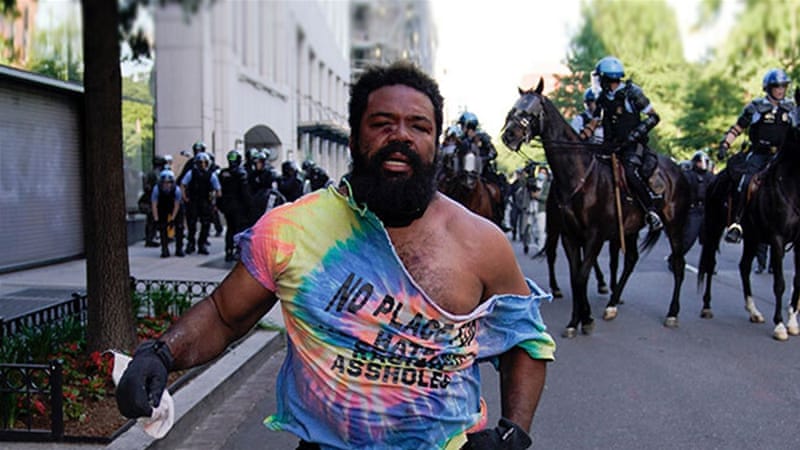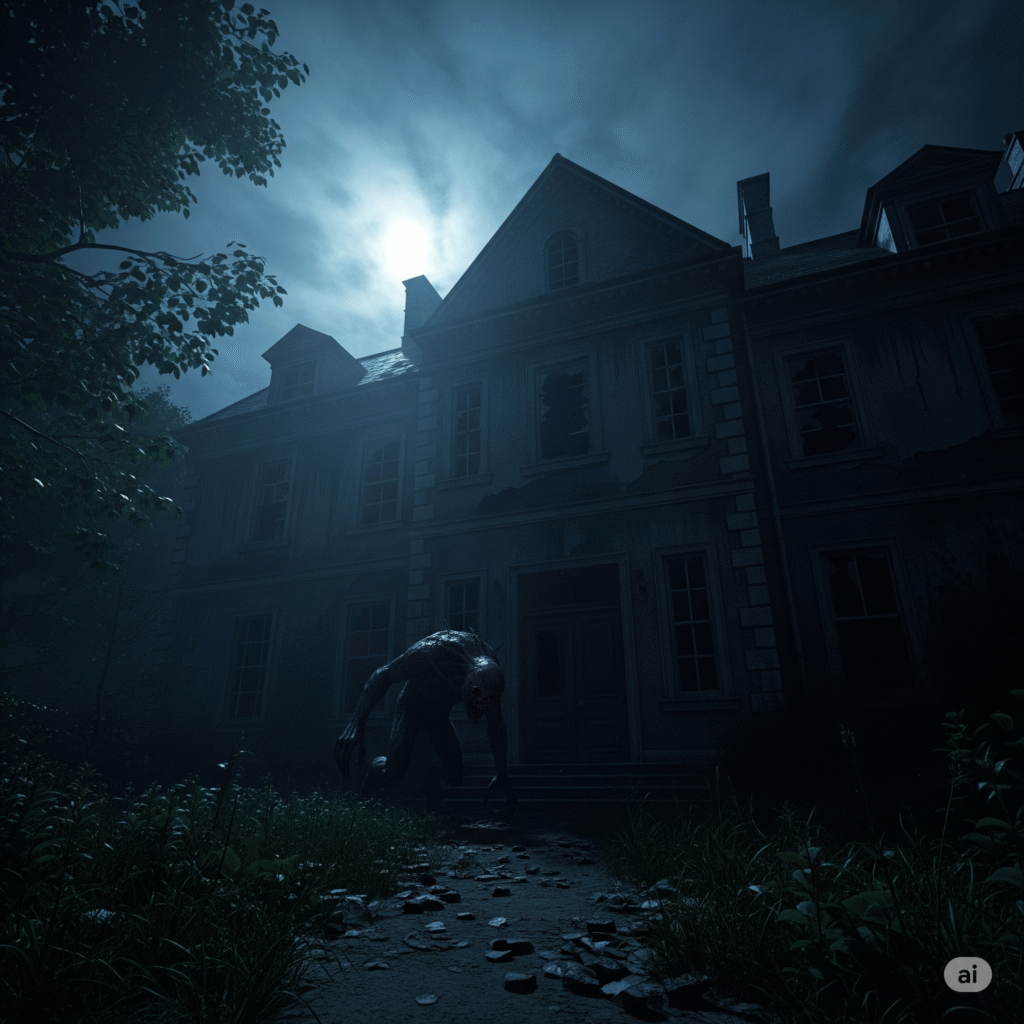

Trending Topi
یہ پہلا موقع نہیں تھا ، جب ایک امریکی پولیس اہلکار نے کسی سیاہ فام آدمی کا قتل کیا تھا
Published
6 years agoon
By
adminنیٹ فلکس دستاویزات کو دیکھتے ہوئے ، میڈیا کے ذریعہ ٹرائلز ، کوئی بھی سمجھ سکتا ہے کہ زیادہ تر کہانیاں اسی ترتیب سے متعلق ہیں ، سب وے پر موجود ایک شخص نے 4 سیاہ فام مردوں کو ہلاک کردیا ، اس نے ایک سیاہ فام لڑکے کو دو بار گولی مار کر کہا ، تمہیں ٹھیک لگتا ہے ، تمہیں مزید ضرورت ہے اس میں سے. اس کے تبصروں سے یہ اندازہ لگایا گیا ہے کہ وہ سیاہ فام لوگوں کو سڑکوں سے باہر نکالنا چاہتا ہے ، یقینا his اس کے چھوٹے دنوں میں ، نیو یارک میں جرائم معمول کی بات تھی ، لیکن پھر بھی ایک سفید فام آدمی یہ کہہ رہا تھا ، جیسے یہ ایک سرد خون والے قاتل کو سزا دی گئی تھی۔ صرف 8 ماہ ایک تارکین وطن کی ایک اور کہانی جو بہتر زندگی ، کمپیوٹر کی ڈگری حاصل کرنے کے لئے امریکہ آیا تھا ، کو 44 بار گولی مار دی گئی ، اور وہ مسلح نہیں تھا۔ مقالوں جیسی کہانیاں ، اس غلط فہمی کو بیان کرتی ہیں کہ امریکہ سے نسل پرستی کا خاتمہ ہوچکا ہے ، لیکن یہ اب بھی ڈھل رہا ہے۔ بہت سے لاطینی لوگوں کی کہانیاں ان کی زندگی میں ایک جیسا درجہ نہیں دیتی ہیں کیونکہ سفید فام امریکی بھی ایک اور دن کی بات کرتے ہیں۔
جب بھی جارج فلائیڈ کو امریکی پولیس نے بے دردی سے قتل کیا ہے ، جو لگتا ہے کہ وہ قواعد پر عمل کرتے ہیں ، لیکن اس کی بجائے انسان کے بارے میں معمول کے ردعمل کو بھول جاتے ہیں ، یہ رحمت ہے ، جارج فلائیڈ نے سانس لینے کے آخری لمحوں میں اپنی ماں کو یاد کیا۔ کوئی سمجھ نہیں سکتا ، آپ لوگوں کے سامنے کیسے کسی شخص کا قتل کرسکتے ہیں ، جب آپ جانتے ہو کہ وہ مر رہا ہے ، کیا آپ اس سے ڈرتے تھے ، کیا آپ یہ سوچ رہے تھے کہ میں اسے جانے نہیں دے سکتا ، کیونکہ وہ پٹھوں میں تھا یا اس سے بڑا تھا آپ ، ان لوگوں کے دماغوں میں کیا گزر رہا تھا ، جو صرف ایک ہی مقصد رکھتے ہوئے اس کے گلے میں گھٹنوں کو موڑ رہے تھے ، یعنی اسے مار ڈالنا اور دوسروں کے سامنے اس کی مثال بنانا ہے۔ کون ان لوگوں کو تربیت دیتا ہے ، کیا ان کو یہ بھی بتایا گیا ہے ، کہ اگر آپ کو کوئی سیاہ فام یا ہسپینک آدمی نظر آتا ہے تو ، اسے اس وقت تک جانے نہ دیں ، جب تک کہ وہ سانس لینے سے قاصر ہو۔ امریکہ بڑے مظاہروں سے گزر رہا ہے ، لیکن پھر بھی اس کے قانون اور اس کی حکومت میں کچھ ایسی ترمیم کرنے سے قاصر ہے جو افریقی امریکی عوام کے قتل یا قتل کی حفاظت کرسکتا ہے۔ یہاں تک کہ چیف آف پولیس نے اپنے افسران کا دفاع کیا ، کہ جارج فلائیڈ کی موت سڑکوں پر آنے والے لوگوں پر ہے۔
2020 میں ہو رہا یہ دیکھ کر یہ ناگوار اور شرمناک ہے ….
You may like
The Weight of Midnight

It all began at midnight. You know, that type of night where even the air seems strange, too quiet, too motionless. Like something is observing. The wedding was a week hence. Everybody was fatigued, and everybody was asleep.
Except Hamza.
I heard the steps, quick but quiet. I walked into the hallway and caught him — hoodie up, shoes in his hand, attempting to slip out. Where was he going? It wasn’t solely sus… it was all wrong. Like something was dragging him out.
Then there was her tone — Anaya. Fierce and wild like thunder on a still sky.
“Where do you think you are going?”
Hamza froze. “It’s midnight and you’re going out?!” she yelled.
With absolutely no fear in his voice, Hamza said, “Can’t you just mind your own business?”
It was about to be a full-fledged drama when I intervened.
“Let him go,” I said with a peaceful voice.
Anaya glared at me as if I’d gone mad. “Huzaifa, you’re coddling him!”
“Let him go,” I said once more. “I’ll deal with the wedding arrangements.”
Umaima screamed from her room, “Huzaifa bhai, in case anything goes wrong, we’re coming after you!”
I remained quiet. I merely let Hamza fade into the darkness.
But there was something about that moment… it wasn’t right. It felt like the darkness engulfed him.
The next day was chaos.
Decorators were late. The mehendi artist cancelled. Cousins showed up unannounced. I managed all. Everyone kept yelling “Huzaifa bhai this,” “Huzaifa bhai that.” I just kept fixing everything as I always do.
But something else was annoying me.
Hamza had come back early morning. But he was silent. Eyes red, not because of sleep. Because of fear. That kid, who never remains quiet, was not speaking a word.
He didn’t even quarrel with Anaya.
I sensed something went wrong that night. I could sense it. But I haven’t asked yet.
Two nights later, I saw him sitting in the lounge. Lights off. Just staring at the wall.
“You’re okay?” I asked.
He nodded slowly. “Just thinking.”
“About?”
He hesitated, then shook his head. “Nothing.”
But his voice was not steady.
He seemed like someone who witnessed something he couldn’t describe.
That’s when I knew. It was no ordinary outing.
The evening of the wedding day, I was in my room, running over the list. My phone vibrated. I didn’t know the number.
I picked up.
Static.
Then, a whisper.
“Bhai… something followed me back.”

I was still.
“What?”
The voice returned — Hamza’s voice.
“I shouldn’t have gone there. It wasn’t a normal place.”
Then nothing.
I tried to call back. Nothing.
Cold shivers ran down my spine. I peeked out my window. Just darkness. But for some reason, I didn’t feel like we were alone.
Anaya entered the room.
“You look as if you’ve seen a ghost.”
I said nothing. I couldn’t. My heart pounded.
She sat next to me and took my hand. “No matter what it is, you’ve got this. You always do.”
I nodded, but I didn’t believe her.
I didn’t sleep that night.
And I wasn’t alone.
I could hear Hamza walking up and down the hallway. Stopped right outside my door. Just stood there for about five minutes.
And then I heard him whisper something… but not in his natural voice.
Like someone else was talking through him.
The day of the wedding arrived. Everything seemed perfect on the outside. Guests were laughing, music was playing, and food was being served.
But Hamza remained silent the entire time. Wouldn’t eat. Wouldn’t smile.
Once Anaya departed, I discovered him sitting by himself close to the gate.
“You okay now?”
He finally uttered something.
“There’s something in the house.”
I nervously laughed. “Don’t be funny now, man.”
“I’m not being funny,” he replied.
“I went to the graveyard behind the rail track on the night before. Just to prove a point to my friends.”
“I went there and got something… just a dumb rock. But since then, I hear whispers. And last night… I saw it standing at the foot of my bed.”
I didn’t have a clue what to say. We just sat there in silence. Cold silence.
So yeah, if it wasn’t for wedding drama or if it wasn’t for sibling drama, then this story is about the fact that sometimes, even the people who are closest to you can be hiding something dark. Something they can’t explain.
It’s about how I was trying to hold the house together while something intangible was trying to rip it apart.
And now?
Now I’m just waiting for whatever Hamza brought home… to reappear.
Because deep down, I know —
It never left.
– This horror piece is conceived by “Huzaifa”
Trending Topi
Fiction and Non-Fiction in Contemporary Times
Published
2 years agoon
November 20, 2023By
admin
I was invited by Fatima Jinnah University for Women to talk about the topic of fiction and non-fiction in contemporary times at the prestigious occasion of Fatamians Literature Festival 2023. In which I explained my own journey that how an engineer became a writer, i explained about my passion to write fiction and non-fiction, because I had always used parts of non-fiction (reality ) and merged them with fiction to create intriguing stories; an example is my work of “the oblivion of affection” and “the hitlers nephew”, “A slash B normal”.
I also explained that how did i organically started making money just because I loved writing and i wanted to invest my time to write novels. The power of imagination is unreal, I also emphasized on the aspect that we are never going to get a combo of fiction and non-fiction in our mainstream media, so start writing today. If you have some unique stories to tell then just start writing, because 13 years ago when I started writing the hitlers nephew I only had ideas but my writing was not up to the mark, today I revised it because the stories that I had written back then were intriguing. So, now that i have polished my writing skills, I can also revised my old works, my current work triviality is also inspired by final year project of my bachelors degree, ” The Zigbee based synchronised clocks”, and even the idea of that project came about because of a dream that I saw in which I was stranded in a desert. Therefore, even for my readers the message is somewhat similar, start turning your dreams into realities, or as a writer start turning your ideas into physical books.

Hello there, this is the creator of Topibaaz speaking, I am called, “Ammar akhter khan”. Amidst the chaos of the Pandemic, I started this blog/social media infotainment website called Topibaaz. However, I did not have enough time to introduce myself. As my Amazon bio says, Ammar Khan is a nerdy researcher, intricate novelist, and a picky traveler, his books are published on Amazon and he has also presented his various research papers at international conferences. Not only this Ammar Khan has an academic writing course that is present on Udemy for beginners, along with it, if you are interested in data analysis, do delve into other courses that I had published on my Udemy account. Just search my full name on Google, “ammar akhter khan”, and I am an open book. Additionally, Ammar is a Pro-earth and mainly focused on global issues and research related to the solution to Global warming, Poverty eradication, Provision of education, and introduction of new technologies in the World.
I have recently published a novel called Triviality – science fiction. Along with it, my other writings are Hitler’s Nephew, the oblivion of Affection, A slash b normal, and Jibran of India. Also, do read the short stories that I had published on Topibaaz, especially, “the last cigarette that I lit” which is not yet completed, but soon I will be able to complete the story. Anyways, I have long-term goals to serve humanity, whether I use my education as my tool or my knowledge, or my content. Say good luck to me!
Trending Topi
What is a submersible and how it is different from a submarine, what were the possible causes of incident of Titan Submarsible
Published
2 years agoon
June 23, 2023By
admin
We had been struck with a huge tragedy of Titan sumarsible that was designed and developed by the OceanGate Inc, but before getting into the depth of the tragedy, lets compare the submarine and the submarsible and how these two are very different from each other.
A submersible and a submarine are both types of underwater vessels, but they have some key differences in terms of design, purpose, and capabilities.
- Design:
- Submersibles are usually smaller and more compact compared to submarines. They are often single-person or small crewed vehicles designed for exploration, research, or deep-sea diving.
- Submarines, on the other hand, are larger and capable of carrying a crew and cargo. They are designed for military purposes, such as warfare, surveillance, and strategic missions.
- Purpose:
- Submersibles are primarily used for scientific exploration, deep-sea research, underwater archaeology, or filmmaking. They are often employed in areas such as marine biology, geology, or oceanography.
- Submarines have both military and civilian applications. In a military context, submarines are used for naval warfare, including patrolling, reconnaissance, and launching missiles. Some submarines are also used for intelligence gathering and special operations. Civilians submarines may be used for underwater tourism or scientific research, but they are less common.
- Depth and Range:
- Submersibles are typically designed for specific depth ranges and may be limited to a few hundred meters or a few thousand meters. They are generally not capable of prolonged operations at great depths.
- Submarines, especially military submarines, are built to operate at significant depths, often reaching several hundred meters to even over a thousand meters. They are capable of extended missions, including staying submerged for extended periods and traveling long distances.
- Construction:
- Submersibles are usually constructed with lighter materials, such as aluminum or fiberglass, to enhance their buoyancy and mobility. They often have transparent domes or viewports for better visibility.
- Submarines are built with strong hulls, often using steel or other sturdy materials to withstand high water pressure. They are designed to be watertight and are equipped with various systems to ensure the safety and survival of the crew.
- Propulsion:
- Submersibles typically use electric batteries or other power sources to propel themselves. They may rely on thrusters or propellers for movement.
- Submarines employ various propulsion systems, including diesel engines for surface travel and electric batteries for submerged operations. Nuclear-powered submarines use nuclear reactors to generate steam and drive turbines, providing them with extended range and endurance underwater.
In summary, submersibles are smaller, often single-person or small crewed vehicles used for exploration and research, while submarines are larger vessels primarily used for military purposes, such as warfare and strategic missions. Submersibles are limited in depth and range, while submarines are built for extended operations at greater depths.
Now lets talk about the tragedy that happened earlier this week, various research articles has discussed warnings and concerns that were raised about OceanGate, a company that planned to take wealthy tourists on trips to explore the wreckage of the Titanic. The company faced criticism from experts both inside and outside the company who expressed concerns about the safety of its submersible craft, named Titan. OceanGate’s director of marine operations, David Lochridge, prepared a report stating that the craft needed more testing and highlighted potential dangers to passengers at extreme depths. Another warning came from 38 industry leaders, deep-sea explorers, and oceanographers who sent a letter to OceanGate’s CEO, Stockton Rush, expressing concerns about the company’s experimental approach and the potential for catastrophic problems with the Titanic mission.
The criticisms focused on Rush’s refusal to have the Titan inspected and certified by leading agencies, which would ensure it met safety standards. Lochridge’s report revealed that the craft’s viewport was only certified for depths of up to 1,300 meters, far less than the 4,000-meter depth required for Titanic trips. Despite the warnings, OceanGate did not pursue certification and dismissed Lochridge, leading to a legal battle that ended in a settlement. The experts also criticized OceanGate’s decision to forgo testing the prototypes under the supervision of a leading certification company, emphasizing the importance of third-party validation for submersible safety.
OceanGate defended its approach, arguing that certification would stifle innovation and that it would take years to get the Titan certified due to its innovative design. The company also avoided certain U.S. regulations by operating the vessel in international waters. Submersibles are largely unregulated, and the Titan, loaded onto a Canadian ship and dropped into the North Atlantic near the Titanic, does not need to register with a country or follow many vessel rules.
The article mentions previous expeditions by OceanGate to the Titanic site, which faced technical issues, including battery problems and damage to the exterior of the submersible. Despite these challenges, some individuals were able to visit the Titanic wreckage on the Titan.
The warnings and criticisms raised about OceanGate’s safety practices and refusal to pursue certification have gained attention in light of the recent disappearance of the submersible craft with five people onboard.
So, the possible causes could be more likely an implosion and not explosion, experts also indicated that led to sudden death of all the individuals on board. Additionally, Years before the tragic incident in which a tourist submersible went missing during an expedition to explore the Titanic shipwreck, concerns over safety issues were raised about the company responsible for the vessel. OceanGate, the privately held company charging $250,000 per person for the Titanic voyage, faced lawsuits and warnings from industry experts. In 2018, a professional trade group expressed concerns about OceanGate’s experimental design approach, citing potential “catastrophic” outcomes.
An employee, David Lochridge, who later sued the company, had raised safety concerns about the submersible’s design and hull testing protocol. Lochridge claimed the company could subject passengers to extreme danger. Lawsuits were also filed by customers who struggled to get refunds for canceled trips due to certification and equipment failure issues. Certification problems emerged as the Titan did not have the intended DNV-GL certification as advertised. Lochridge alleged that OceanGate refused to pay for necessary upgrades to meet safety requirements. OceanGate’s lawsuit against Lochridge emphasized that he was not an engineer, while he argued that his role was to ensure safety during operations.
Recent Posts
- The Weight of Midnight
- Fiction and Non-Fiction in Contemporary Times
- The Bedwetter – While being Wet he explored the Whole Universe
- Let’s Dive deep into Ocean Gate’s Submersible Tragedy
- About Creator of Topibaaz
- What is a submersible and how it is different from a submarine, what were the possible causes of incident of Titan Submarsible
- Former Chief of Staff of Army of Pakistan increased in Assets and an Outlook of Army’s Wealth
- Toshakhana- The culmination of all the Corrupt Political Elites of Pakistan
- Corrupt Political dynasties, Influence of Army and Rigged Voting System of Pakistan
- THE PROTECTOR OF KARACHI
